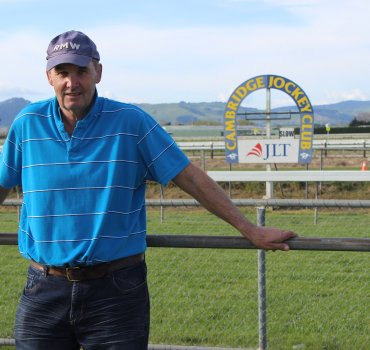

Cambridge Jockey Club president Bruce Harvey said a custom-designed Waikato racing facility would almost certainly be based in the Waipa district, because that’s where the majority of horses are.
The thoroughbred racing industry was given a shake-up recently, with the release of John Messara’s report into the future of horse racing in New Zealand. With a proposal to reduce the number of tracks from 48 down to 28, Cambridge emerged as a clear winner, named as one of three locations where new synthetic tracks could be installed. Also on the cards in the longer term is the sale of the Cambridge track, as the report also recommended the creation of a ‘Waikato Greenfields’ site – a hub for Waikato racing to be established in the next 8-10 years.
This proposed development would be funded by the sale of Cambridge, Te Rapa and Te Awamutu tracks. This custom-designed facility would be a “no-brainer” according to Cambridge Jockey Club president Bruce Harvey, who said a centralised Greenfields ‘hub’ will be crucial to secure the future of the industry. “Nearly every racecourse in the country is in decline – they can’t maintain their facilities,” Bruce said, pointing out that the first report recommending the centralisation of racing venues was released in 1965. “And five subsequent reports have said the same thing.”
“It would be irresponsible not to act now,” he added, saying that a state-of-the art venue such as the one proposed will help to attract younger trainers and owners. “Otherwise we’re just going to lose young people out of the game.”
Demand for the 150-acre Cambridge facility on Racecourse Rd has grown markedly over the years, with the facility that was designed for 300 – 400 horses now bulging at the seams with 1000 horses a month training there, 1200 in the busy season.
But with any Greenfields site almost a decade away, the Cambridge track could join Awapuni (Palmerston North) and Riccarton Park (Christchurch) with a synthetic track installed for both training and racing. “It makes sense, because Cambridge is the biggest training centre numbers-wise in Australasia,” Bruce explained. According to the report, if funding was agreed, construction of the new track could begin as early as next January, with training to start from May and racing to follow no later than next July or August. The report describes the synthetic track as “vital” for the Cambridge track’s training needs, and Bruce agrees.
Minister for Racing Winston Peters, who released the report in Hamilton two weeks ago, said the report contains a number of recommendations to turn around the “dire” state the New Zealand racing industry is in. “No decisions have been made yet, and officials are assessing the report and preparing advice for Cabinet to consider. That includes considering all options and deciding what changes may need to be made through legislation,” Minister Peters concluded.








